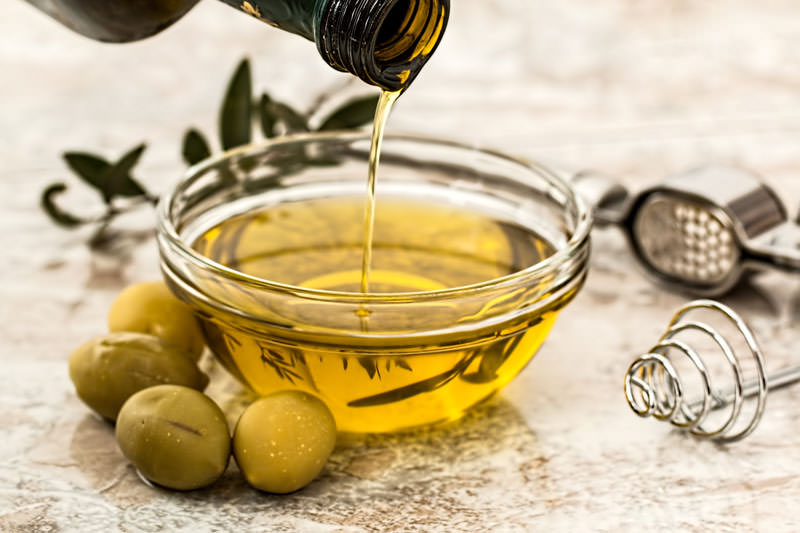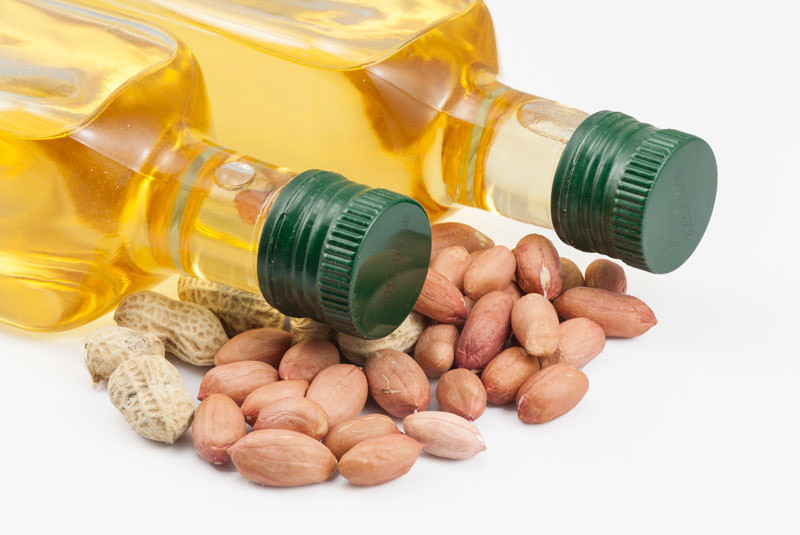A breakdown of the best ones to use in the kitchen.
From fruits and nuts to seeds and grains, the world of cooking oils is a lot more complicated these days than choosing between extra-virgin and light olive oil (though we’ll get to that, too). With their variety of flavors and smoke points — the temperature at which an oil starts to burn, negatively impacting its flavor and nutritional content — which oil should you choose? And how do you store it? Enter edible Reno-Tahoe’s guide to cooking oil.
Olive Oil
It feels like every year the olive oil section of the grocery store gets bigger. In addition to an overwhelming number of brands from all over the world, there are labels for light, regular, pure, virgin, extra-virgin, and a slew of infused varieties.

To simplify, extra-virgin olive oil, or EVOO, is the unadulterated oil extracted from crushed olives. Depending on the olives’ origin, the oil’s flavor can range from grassy to fruity to spicy. The oil is a rich source of antioxidants and heart-healthy monounsaturated fats. It has a low smoke point of about 325 to 375 degrees F, so it’s good for low- to medium-heat sautéing, vinaigrettes, and as a finishing oil drizzled over food, but it’s not ideal for high-heat cooking.
Behind EVOO in quality is virgin olive oil, followed by the lower-grade regular, pure, and light olive oils. The latter three are not made from the first press of the olives and usually are chemically treated to neutralize flavor. They’ve got lighter colors and flavors, as well as a higher smoke point of about 465 degrees F, so they’re better for cooking at high temperatures.
Debbie Smith, owner of Tahoe Oil and Spice in Truckee, warns that not all olive oils are created equal. Deceptive marketing and production practices with respect to imported varieties can mean your olive oil is not as high quality and fresh as advertised or even from the country its label claims it to be, she says. She recommends purchasing your oil from a specialty shop that thoroughly vets its products and allows you to taste the oil before purchase.
Otherwise, don’t let pretty labels or high price tags persuade you, she adds. Look for third-party certification such as a seal from the California Olive Oil Council. Harvest dates are better indicators of freshness than “best by” or “bottled by” dates.
Grapeseed Oil
With a light-green color and clean taste, grapeseed oil often is used in the kitchen for its high smoke point of 420 degrees F. Rich in polyunsaturated fats and vitamin E, grapeseed oil can be used for high-temperature sautéing, grilling, and searing when you want a neutral flavor. To avoid the chemical solvents used to extract the oil, look for a cold-pressed variety.
Avocado Oil
Following the steady rise in popularity of overpriced restaurants’ takes on avocado toast comes the increasing trendiness of the fruit’s oil. This heart-healthy avocado oil is expensive — often surpassing EVOO’s cost — but has a nutty, buttery flavor making it a good option for dressings or as a finishing oil. It also has an impressively high smoke point of about 520 degrees F, so it can be used for high-heat roasting, searing, and sautéing.
Sesame Oil
Regular sesame oil, made from raw sesame seeds, has a mild, nutty flavor and smoke point of 410 degrees F that’s ideal for sautéing, roasting, and searing. However, for a real flavor punch, try toasted sesame oil. Since the toasted version already has developed its flavor from heat, it works best as a finishing oil — and a little goes a long way.
Flaxseed Oil
Golden-yellow flaxseed oil can impart a funky flavor as a finishing oil or mixed into dressings, and due to a low smoke point (225 degrees F), it should only be used for low-heat cooking. Though flaxseed is expensive, health-wise it’s high in potassium and omega-3 fatty acids. In recent years, flaxseed oil also has been recommended as an excellent oil for seasoning cast iron because of its ability to form a protective barrier on hard surfaces. It should be stored in the refrigerator.
Canola Oil
Canola oil (an acronym for “Canada oil, low acid”) has endured a bumpy public perception over the years. Made from a variety of rapeseed that’s low in erucic acid, high doses of which may have toxic effects on heart health in high doses, canola oil is perfectly safe when consumed in moderation.
“There certainly are stories out there about canola oil being a terrible product, but I disagree with that,” says Jenn Trew, a registered dietitian and Lake Tahoe Community College nutrition and culinary instructor. “It’s virtually flavorless, it’s cheap, and it works really well in different types of cooking. It has a similar profile to olive oil as far as being low in saturated fat and higher in the monounsaturated fats.”
Canola is a versatile oil with a smoke point of around 400 degrees F. Its neutral flavor also makes it a good option for baking. It will go rancid after about a year.
Algae Oil
The latest — and arguably most interesting — oil to hit shelves is made from algae. New to the market, the most widely available product is Thrive Culinary Algae Oil, which has more monounsaturated fatty acids and less saturated fat than olive oil, according to the company. With a high smoke point of 485 degrees F and a neutral taste, it can be used for high-heat cooking or baking.
Nut Oils

Walnut, cashew, peanut, pistachio, macadamia, hazelnut — if you can mylk it, you can make an oil from it. Though potentially problematic due to the prevalence of nut allergies, they can add distinctive flavors to dishes. Walnut oil can become bitter when heated, so it’s best to add it to dressings or use it as a finishing oil. Peanut oil, with a smoke point of 450 degrees F, is good for frying and fondues, but it goes rancid quickly and should be used within a few months.
Coconut Oil
For years, coconut oil reigned supreme as the wellness world’s cure-all, used in everything from cooking and baking to beauty products. Trew believes a well-executed marketing campaign is to thank for its sudden popularity, but she’s glad to see that public consensus is catching up with what health professionals have been saying all along: Coconut oil has a high concentration of saturated fat, which can increase the risk of heart disease.
While still an excellent alternative to butter, it’s also high in saturated fat and solid at room temperature — for vegan baked goods, it is not the healthiest oil option on the market as previously believed.
Claire McArthur is a freelance writer and avid home cook who, as it turns out, knew shockingly little about different types of oil prior to writing this article. You can reach her at Clairecudahy@gmail.com.
Storage Tip
Store most oils in a cool, dark space, out of direct sunlight. A sealed, dark-colored or stainless-steel container will protect the oil from sun and oxygen exposure, which can degrade its quality, ultimately turning it rancid more quickly.
Virgin vs. Refined
Oils that are extracted and bottled without further processing are labeled as virgin, unrefined, cold pressed, or raw. On the plus side, this means they retain their flavor and nutritional profile; however, they also have a lower smoke point and a shorter shelf life.
On the other hand, refined oils are treated with chemicals or heat to remove the compounds that will break down the oils, resulting in a more neutral taste, longer shelf life, and higher smoke point.


